Clematis
Delicate white, light yellow, cream roses look harmonious when paired with bright purple clematis. The latter uses the strong stems of rose bushes as a support, entwining them with thin vines.
Clematis blooms with a lush “cap”. Depending on the variety, the inflorescences have an open or bell-shaped form. The color is most often purple, but there are also soft pink, lilac, yellow shades.
Clematis and roses prefer soil that is the same in composition and moisture level, so they do not require special care from gardeners. They decorate garden arches, trellises, and openwork walls of gazebos.
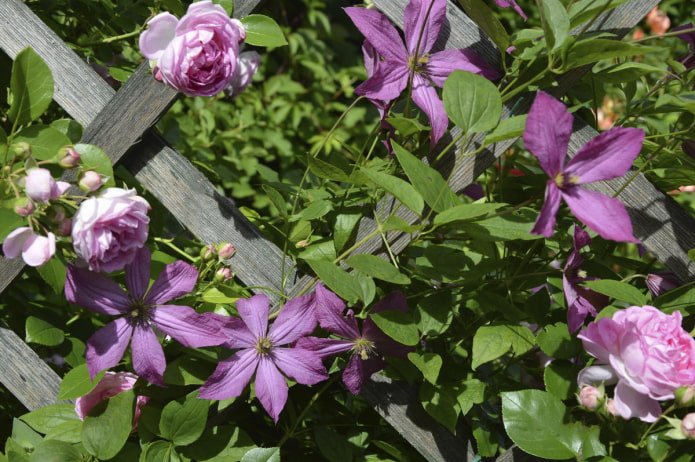
Grapes
The proximity of rose bushes to grapes is attractive to the eye and very convenient for care. The crops require the same agricultural technology, suffer from the same diseases, and prefer identical shelter for the winter.
Plants are placed along the perimeter of the site or around gazebos one meter from each other. The most impressive in the company of grapes is a climbing rose, rising up to 1.5 meters in height along a support.
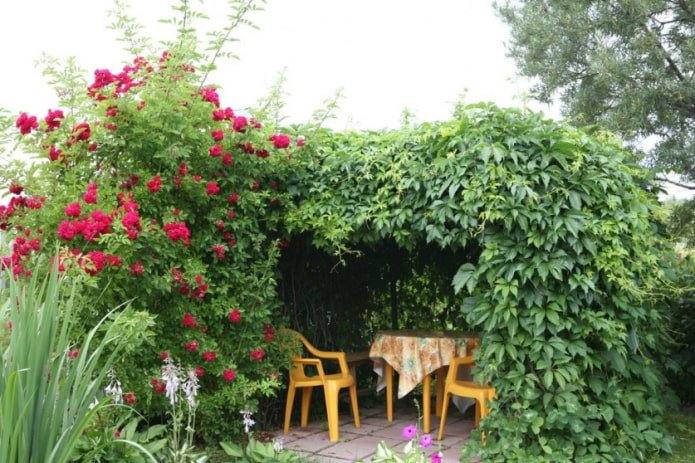
Delphinium
The upward-striving inflorescences of the delphinium are an excellent background for a rose garden. The flowerbed can be made multi-colored or monochrome, consisting of two species or including dozens of other plants.
It is not recommended to plant a rose close to a delphinium. The latter has a well-branched rhizome that can suppress surrounding plants.
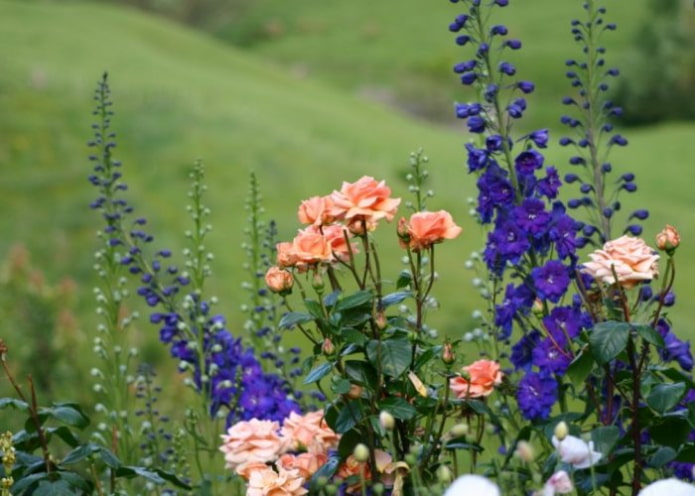
Fennel
Fragrant fennel attracts pollinating insects to rose bushes, which is why the flower beds bloom throughout the summer. Many gardeners prefer to combine these two plants in one bed because of their healing properties.
Rose petals are valued for their high content of vitamin C, and fennel is considered almost the main garden “healer”. It is used for colds, intestinal problems, and for cosmetic procedures.
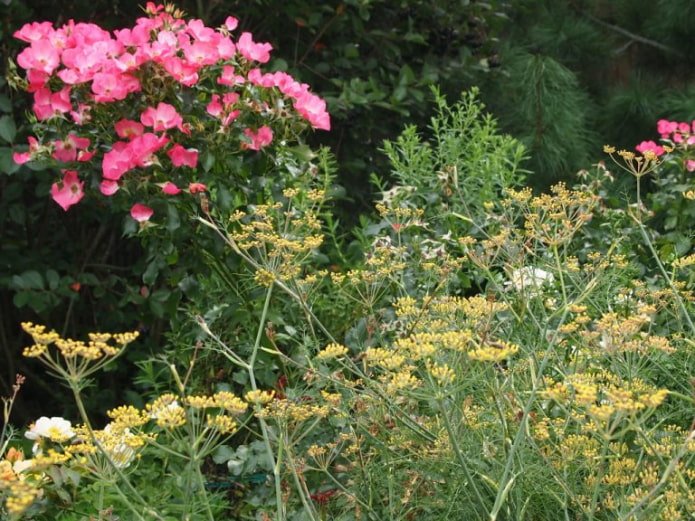
Phlox
Abundantly blooming phlox is used as a background for low-growing varieties of roses and as a border for tall ones. When planting seedlings, it is important to leave about a meter of free space between the bushes. Constant air circulation prevents the development of most diseases, rot, and fungus.
For the visual appeal of the flowerbed, phlox are chosen in a single color. It is better to give preference to white inflorescences with brightly colored roses and vice versa. Excessive variegation will not allow you to enjoy the beauty of any of the crops.
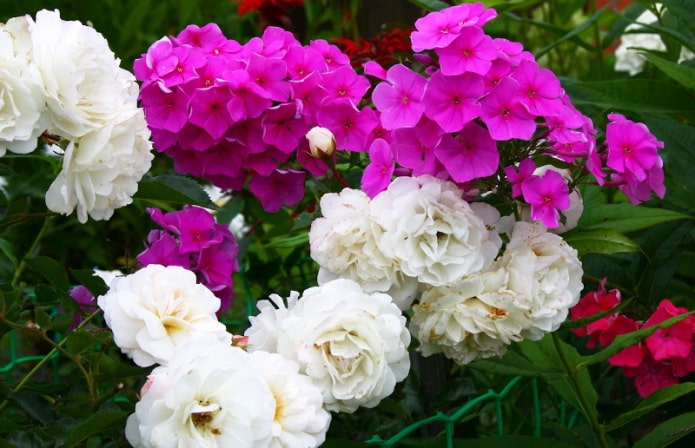
Irises
Irises are considered early flowering perennials. Violet-yellow, blue and almost black petals begin to fade in June. Despite this, irises retain their beauty even after flowering. They are actively used to create flower beds and mixborders.
The sword-shaped, sky-striving leaves of the iris create a rich green background for pink inflorescences. Plants are planted at a distance of 30-40 cm from each other to avoid a conflict of root systems. For flowerbeds, choose medium-sized rose varieties: Pastella, Golden Border, etc.

Astilbe
Gardeners love the combination of roses with perennial astilbe for their high decorative qualities. Cream, light pink, honey or burgundy inflorescences of the herbaceous crop are distinguished by an openwork paniculate shape.
In combination with roses, astilbe requires regular watering and good mulching to retain moisture.
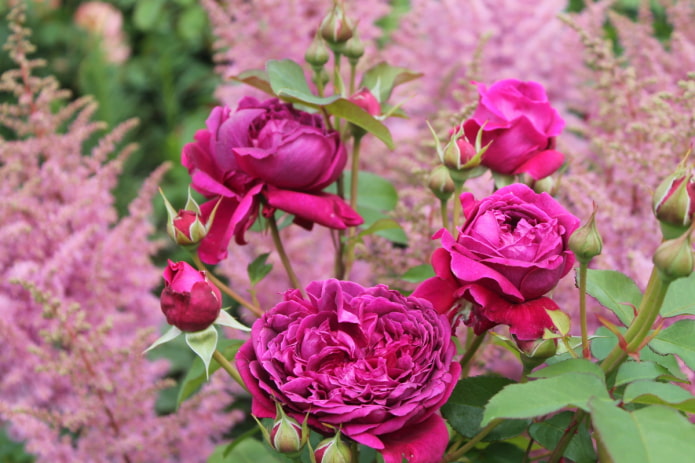
Hosta
During flowering, all the splendor of the rose bush is concentrated at the top. The lower part remains uncovered and, in most cases, looks inconspicuous. Hosta helps to fill the space and add volume. A perennial ornamental grass with lush, often two-colored leaves grows in neat bushes on the lower tier.
Unlike roses, hostas prefer moist soils and a little shade. To prevent such a flowerbed from withering after the first year of planting, you need to try to please both crops at once. Suitable humidity is provided by a drip irrigation system.
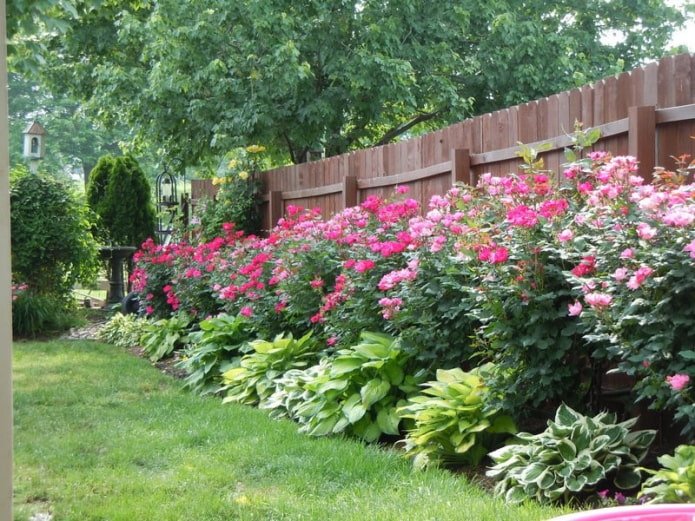
Lavender
Lavender is an excellent protector against aphids and ants. With proper care, the crops form an incredibly beautiful duet. Garden paths, front entrances and recreation areas are decorated with lilac-pink flowerbeds.
For greater decorativeness, lavender is planted in groups, which creates the effect of a lush cloud during flowering. Both plants love the sun, so you should not place them too close to each other. Tall varieties of roses are tied to a support, providing access of light to the soil around the bush.
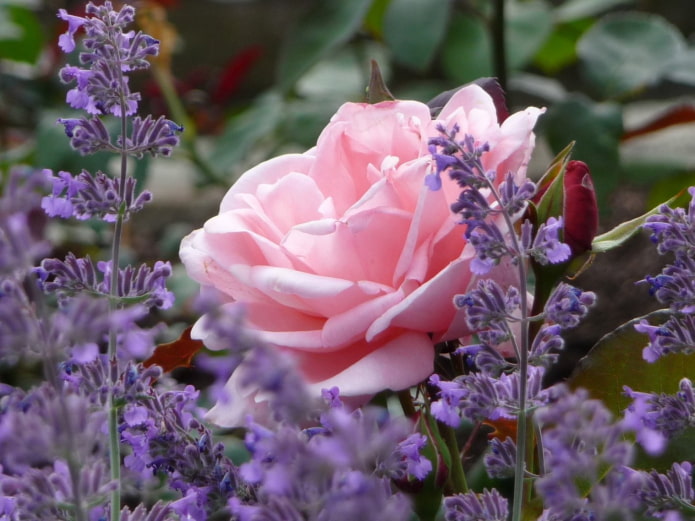
Parsley
In addition to decorative crops, rose bushes get along well in the same bed with fragrant parsley, oregano and thyme. The latter, with their aroma, scare away pests from the flowerbeds, ensuring peaceful flowering throughout the summer. A lush carpet of small-leaved greenery prevents weeds from settling in the flowerbed, and a monochromatic background favorably emphasizes the beauty of the inflorescences.
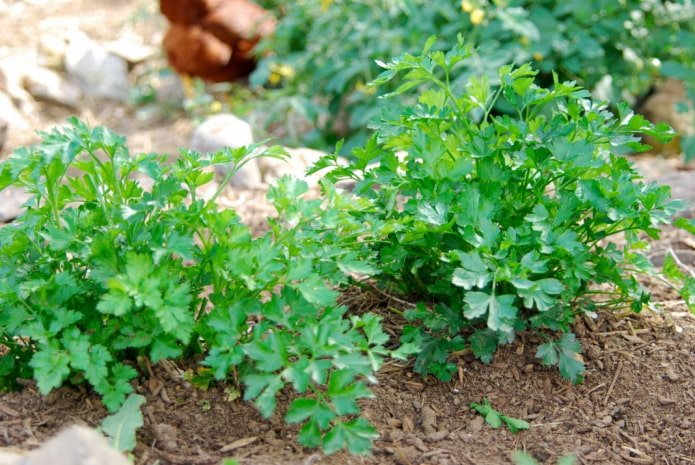
When choosing neighbors, it is important to pay attention not only to the visual compatibility of colors, but also to their requirements for soil quality. There should be enough nutrition, light and moisture for both crops.
Now reading:
- Clinker tiles: 55 photos and inspiration for facades, porches and interiors
- Classic Bedroom: 35 Photos and Interior Design Tips.
- Choosing linoleum for the hallway: important tips for every buyer.
- Bathroom mirrors: 80 interior photos and stylish design solutions.
- Chalkboard paint for interior: 32 photos, tips on application and features